|
|
|
Cambridge University Press
|
The siege of Leningrad constituted one of the most dramatic episodes of World War II, one that individuals and the state began to commemorate almost immediately. Official representations of heroic Leningrad omitted and distorted a great deal. Nonetheless, survivors struggling to cope with painful memories often internalized, even if they did not completely accept, the state's myths, and they often found their own uses for the state's monuments. Tracing the overlap and interplay of individual memories and fifty years of Soviet mythmaking, the book contributes to understandings of both the power of Soviet identities and the de-legitimizing potential of the Soviet Union's chief legitimizing myths. Because besieged Leningrad blurred the boundaries between the largely male battlefront and the predominantly female home front, it offers a unique vantage point for a study of the gendered dimensions of the war experience, urban space, individual memory, and public commemoration. |
|
Why has democracy failed to take root in Russia? After shedding the shackles of Soviet rule, some countries in the postcommunist region undertook lasting democratization. Yet Russia did not. Russia experienced dramatic political breakthroughs in the late 1980s and early 1990s, but it subsequently failed to maintain progress toward democracy. In this book, M. Steven Fish offers an explanation for the direction of regime change in post-Soviet Russia. Relying on cross-national comparative analysis as well as on in-depth field research in Russia, Fish shows that Russia's failure to democratize has three causes: too much economic reliance on oil, too little economic liberalization, and too weak a national legislature. Fish's explanation challenges others that have attributed Russia's political travails to history, political culture, or to shock therapy in economic policy. The book offers a theoretically original and empirically rigorous explanation for one of the most pressing political problems of our time. |
|
Jane Austen's stock in the popular marketplace has never been higher, while academic studies continue to uncover new aspects of her engagement with her world. This fully updated edition of the acclaimed Cambridge Companion offers clear, accessible coverage of the intricacies of Austen's works in their historical context, with biographical information and suggestions for further reading. Major scholars address Austen's six novels, the letters and other works, in terms accessible to students and the many general readers, as well as to academics. With seven new essays, the Companion now covers topics that have become central to recent Austen studies, for example, gender, sociability, economics, and the increasing number of screen adaptations of the novels. |
|
International organizations are at the heart of many global issues today. This new textbook looks at the leading international organizations and explains how they both shape and are shaped by international politics. The book examines three themes: the legal obligations that give international organizations their powers; the mechanisms that elicit compliance by their member states; and the practices of enforcement in the organization. Each chapter shows how international organizations work in practice and the interactions between them and their member states. This fresh text provides a comprehensive understanding of what international organizations do, how and why they do it, and the challenges they face. |
|
The University of Cambridge Anthologies of Poetry and Stories. Songs of Ourselves is an accessible one-volume introduction to the astonishing range of forms, styles and content of verse written in the English language over more than four centuries, containing work by more than 100 poets from all parts of the English-speaking world. |
|
The article-based thesis is becoming increasingly common, especially in the 'hard' sciences such as biology, medicine and technology, and is beginning to replace the traditional monograph. Format guidelines vary among universities. This is the first book to summarise the main features, showing the PhD student how to prepare a thesis in such a format. The suggestions are highly practical; both its good and bad examples from published theses support the author's wise advice on all aspects of such theses. Poor figures are not only scrutinised in detail but also redrawn for comparison. Guidance also covers the issues of reprint permissions and copyright. This informative and accessible book, from the author of How to Write and Illustrate a Scientific Paper, has been developed through the author's extensive teaching experience in scientific writing and also his experience as a journal editor. It is therefore an indispensable guide to article-based thesis success. |
|
Новый ускоренный курс для подготовки к ЕГЭ состоит из пяти глав: Listening, Reading, Grammar and Vocabulary, Writing, Speaking. Каждая глава имеет два раздела: один формирует необходимые умения и навыки, второй их отрабатывает и закрепляет. Многие упражнения направлены на преодоление типичных ошибок русскоязычных учащихся, выявленных в помощью Кембриджского учебного корпуса. Пособие содержит два полных типовых КИМа: Diagnostic Test и Exam Practice Paper, а также образцы устных и письменных ответов с разбором. Тексты к заданиям по аудированию находятся в бесплатном доступе онлайн. После введения устной части ЕГЭ материалы в формате экзамена будут также доступны онлайн. |
|
This simple and clear guide to lecturing is an example-based account of effective strategies for exciting and successful lectures for academic and business lecturers. From the lecturing mindset, combating fear and nervousness, to lecturing tricks and tactics, this book discusses a wide array of practical ideas that may surprise and help even the most experienced public speakers and lecturers. The author provides unique insights into lecturing for 21st century audiences, based on his academic and non-academic lecturing experiences at the University of Toronto and Stanford University; experiences which have resulted in numerous institutional, provincial, and international teaching and lecturing awards. |
|
Creative writing has become a highly professionalised academic discipline, with popular courses and prestigious degree programmes worldwide. This book is a must for all students and teachers of creative writing, indeed for anyone who aspires to be a published writer. It engages with a complex art in an accessible manner, addressing concepts important to the rapidly growing field of creative writing, while maintaining a strong craft emphasis, analysing exemplary models of writing and providing related writing exercises. Written by professional writers and teachers of writing, the chapters deal with specific genres or forms — ranging from the novel to new media — or with significant topics that explore the cutting edge state of creative writing internationally (including creative writing and science, contemporary publishing and new workshop approaches). |
|
Accessible, entertaining and groundbreaking, The Cambridge Introduction to Creative Writing is not only useful textbook for students and teachers of writing, but also an entertaining and inspiring read in its own right. Aspiring authors and teachers of writing will find much to discover and enjoy. |
|
Whether you are a graduate student seeking to publish your first article, a new Ph.D. revising your dissertation for publication, or an experienced author working on a new monograph, textbook, or digital publication, Handbook for Academic Authors provides reliable, concise advice about selecting the best publisher for your work, maintaining an optimal relationship with your publisher, submitting manuscripts to book and journal publishers, working with editors, navigating the production process, and helping to market your book. It also offers information about illustrations, indexes, permissions, and contracts and includes a chapter on revising dissertations and one on the financial aspects of publishing. The book covers not only scholarly monographs but also textbooks, anthologies, multiauthor books, and trade books. The fifth edition has been revised and updated to align with new technological and financial realities, taking into account the impact of digital technology and the changes it has made in authorship and publishing. |
|
This is an invaluable introductory guide for the English student who needs to decipher a page from a play, or a facsimile equivalent, from the Shakespearean period. The original quartos and folios of early play texts are increasingly subject to editorial and critical scrutiny, and electronic facsimiles are making the originals accessible to undergraduate and graduate students. Giddens provides a practical 'how to' guide to the original printed texts of Shakespeare and his contemporaries. He explains how the features of the play text came about, what the different elements mean, and who created them. The book provides that important first step towards bibliography and critical editing, presenting a detailed account of how to read these early texts and how they have been turned into the modern editions we are accustomed to. |
|
This second edition of How to Write and Illustrate a Scientific Paper will help both first-time writers and more experienced authors, in all biological and medical disciplines, to present their results effectively. Whilst retaining the easy-to-read and well-structured approach of the previous edition, it has been broadened to include comprehensive advice on writing compilation theses for doctoral degrees, and a detailed description of preparing case reports. Illustrations, particularly graphs, are discussed in detail, with poor examples redrawn for comparison. The reader is offered advice on how to present the paper, where and how to submit the manuscript, and finally, how to correct the proofs. Examples of both good and bad writing, selected from actual journal articles, illustrate the author's advice — which has been developed through his extensive teaching experience — in this accessible and informative guide. |
|
An essential guide for succeeding in today's competitive environment, this book provides beginning scientists and experienced researchers with practical advice on writing about their work and getting published. This new, updated edition discusses the latest print and Internet resources. Preparing, submitting and publishing scientific papers is now largely electronic, and the book has been revised to reflect this. New material includes more information on including supplementary material online, using reference management software, and preparing tables and figures; expanded sections on structuring a discussion section and the strengths and limitations of the research; and additional material on international aspects of scientific writing. The book guides readers through the processes involved in writing and publishing for scientific journals, from choosing a suitable journal to presenting results and citing references. It covers ethical issues in scientific publishing; explains rights and permissions; and discusses writing grant proposals, giving presentations and writing for general audiences. |
|
Scientists are rarely given formal training in presentation skills and yet are often called upon to present the results of their research to their peers. This book provides a practical guide to the creation and delivery of scientific presentations, whatever the topic. Its 'how-to' style leaves discussion of the background psychology of public speaking to others and focuses instead on the issues that are of immediate concern to the busy scientist. The text covers all of the important aspects of scientific presentations, ranging from audience awareness to handling questions. Links are included throughout the text to the accompanying DVD-ROM, which contains annotated video clips of speakers delivering a talk, demonstrating the common problems found with many presenters, as well as the exercises designed to overcome them. Image files of different slide layouts, colour schemes and font styles demonstrate the design issues that the speaker must consider when creating visual material. |
|
A unique introduction to the design, analysis, and presentation of scientific projects, this is an essential textbook for undergraduate majors in science and mathematics. The textbook gives an overview of the main methods used in scientific research, including hypothesis testing, the measurement of functional relationships, and observational research. It describes important features of experimental design, such as the control of errors, instrument calibration, data analysis, laboratory safety, and the treatment of human subjects. Important concepts in statistics are discussed, focusing on standard error, the meaning of p values, and use of elementary statistical tests. The textbook introduces some of the main ideas in mathematical modeling, including order-of-magnitude analysis, function fitting, Fourier transforms, recursion relations, and difference approximations to differential equations. It also provides guidelines on accessing scientific literature, and preparing scientific papers and presentations. |
|
Rhetoric and composition is an academic discipline that informs all other fields in teaching students how to communicate their ideas and construct their arguments. It has grown dramatically to become a cornerstone of many undergraduate courses and curricula, and it is a particularly dynamic field for scholarly research. This book offers an accessible introduction to teaching and studying rhetoric and composition. By combining the history of rhetoric, explorations of its underlying theories, and a survey of current research (with practical examples and advice), Steven Lynn offers a solid foundation for further study in the field. Readers will find useful information on how students have been taught to invent and organize materials, to express themselves correctly and effectively, and how the ancient study of memory and delivery illuminates discourse and pedagogy today. This concise book thus provides a starting point for learning about the discipline that engages writing, thinking, and argument. |
|
Are you struggling to meet your coursework deadlines? Finding it hard to get to grips with your essay topics? Does your writing sometimes lack structure and style? Would you like to improve your grades? This text covers everything a student needs to know about writing essays and papers in the humanities and social sciences. Starting from the common difficulties students face, it gives practical examples of all the stages necessary to produce a good piece of academic work: interpreting assignment topics; drawing on your own experience and background; reading analytically and taking efficient notes; developing your argument through introductions, middles and conclusions; evaluating and using online resources; understanding the conventions of academic culture; honing your ideas into clear, vigorous English. This book will provide you with all the tools and insights you need to write confident, convincing essays and coursework papers. |
|
The detailed, practical, step-by-step advice in this user-friendly guide will help students and researchers to communicate their work more effectively through the written word. Covering all aspects of the writing process, this concise, accessible resource is critically acclaimed, well-structured, comprehensive, and entertaining. Self-help exercises and abundant examples from actual typescripts draw on the authors' extensive experience working both as researchers and with them. Whilst retaining the user-friendly and pragmatic style of earlier editions, this third edition has been updated and broadened to incorporate such timely topics as guidelines for successful international publication, ethical and legal issues including plagiarism and falsified data, electronic publication, and text-based talks and poster presentations. With advice applicable to many writing contexts in the majority of scientific disciplines, this book is a powerful tool for improving individual skills and an eminently suitable text for classroom courses or seminars. |
|
The core of scientific computing is designing, writing, testing, debugging and modifying numerical software for application to a vast range of areas: from graphics, meteorology and chemistry to engineering, biology and finance. Scientists, engineers and computer scientists need to write good code, for speed, clarity, flexibility and ease of re-use. Oliveira and Stewart's style guide for numerical software points out good practices to follow, and pitfalls to avoid. By following their advice, readers will learn how to write efficient software, and how to test it for bugs, accuracy and performance. Techniques are explained with a variety of programming languages, and illustrated with two extensive design examples, one in Fortran 90 and one in C++: other examples in C, C++, Fortran 90 and Java are scattered throughout the book. This manual of scientific computing style will be an essential addition to the bookshelf and lab of everyone who writes numerical software. |
|